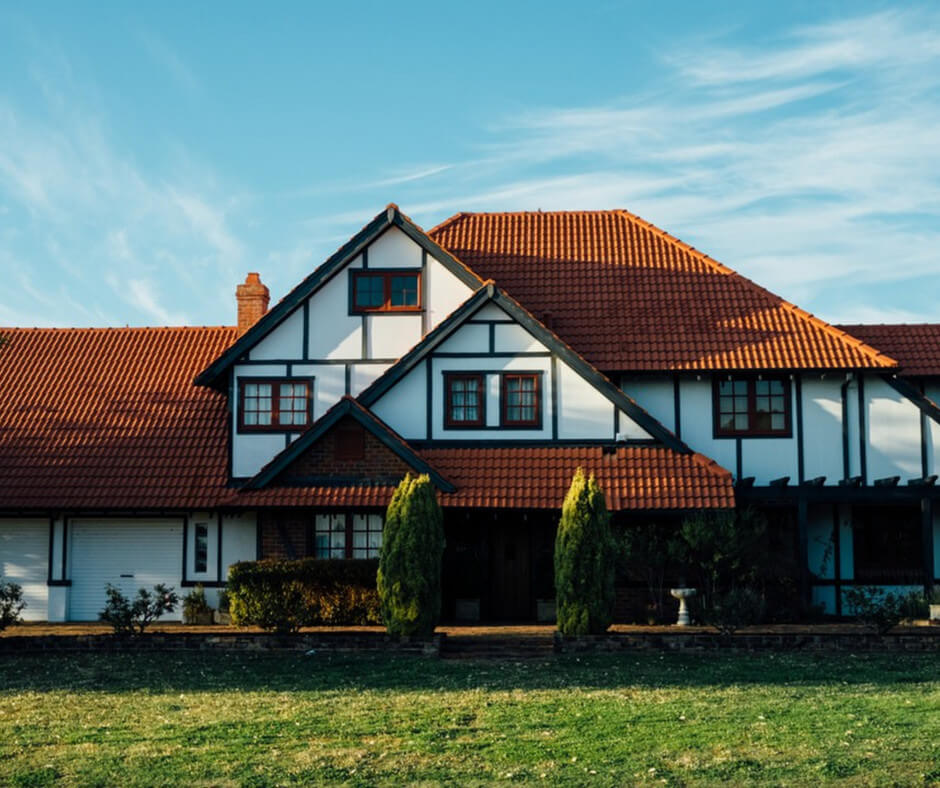So you’re thinking about buying your first home. You’ve done the quick math and you’ve discovered that your mortgage payment would be less than the rent you’re paying now…or would it?
Sure, the mortgage, even including interest, taxes, and insurance, might be lower than the rent you’re paying now. But there’s a ton of unexpected costs of home ownership that you might not be thinking of.
As soon as you move into your house, you will have some new expenses that you didn’t have before.
10 Unexpected Costs of Home Ownership
Here are 10 unexpected costs of home ownership that you’ll want to be aware before you buy a home so that you’re not caught off guard.
1. Lawn Care and Landscaping
If you have any lawn at all, the bare minimum upkeep you’ll need to do is mowing the lawn. You’ll need to either buy a mower or hire someone to mow for you.
You might think it ends there, but a lawn requires more than mowing unless you’re okay with a muddy/dusty yard with dead grass. You’ll need to at least occasionally water the lawn, and ideally, you should fertilize it and take care of any lawn pests.
You’ll also need tools in addition to a mower, like a weed trimmer, a rake, and a hose. If you’ve seen the lawn care section of home improvement stores, you know that you could easily fill your garage or utility space with lawn care tools.
2. Utilities like water, sewer, and trash
Many apartments include at least some utilities in the rent. When you buy a house, you have to add them to your budget.
Remember the part about watering the lawn? That can spike your water usage and your bill. Some homeowners opt for a second meter to measure water they use for outdoor use. The water company will not charge for sewer service for this second meter.
3. Increased Taxes and Insurance
Although these are usually lumped in with your mortgage payment, they are subject to increases.
Usually, taxes are limited as to how much they can increase, but new assessments or voter-approved higher rates can cause them to go up. It is possible that they can go down, but that’s usually because the value of your house has gone down, which doesn’t happen very often.
4. Pest Control
Landlords often take care of pest control inside and out. You’re responsible for doing this as a homeowner, and you’ll want to be proactive. Finding termite or carpenter ant damage is not fun or cheap.
5. Homeowners Association (HOA) Fees
If your new house requires you to belong to a homeowners association, you’ll have monthly fees that average $200 to $300 for a single-family home, according to Realtor.com.
The good news, though, about a homeowners’ association is that they may cover some of the above expenses like lawn care and snow removal.
6. Furniture
Sure, you might be able to move a lot of furniture that you already own from your apartment to your new home, but often there are rooms in a house that you didn’t have in an apartment, like a basement, a foyer, a breakfast nook, an extra bedroom you can use as an office, or a laundry/utility room.
Will you want a workbench or organization shelves in your garage?
7. Snow and Ice Removal
If you live in a northern climate and have a long driveway, you’ll need to either have a truck with a plow or pay a service to remove snow. If there is a sidewalk on your property, it’s now your responsibility to keep it free of ice and snow.
8. Security System
If you want an alarm system, you’ll need to pay a monthly fee.
9. Repairs and Tools
For an average home, maintenance and repair costs will amount to 1 to 4 percent of the value of the home each year, according to U.S. News & World Report.
When you’re shopping for a house, check the age of the roof, siding, flooring, appliances, and HVAC, plumbing, and electrical systems, as they will need to be upgraded if they’re too old.
You might want to consider a home warranty to cover the repair and replacement of appliances and system components. This would be a monthly expense, but it could even out and possibly even lower your spending while protecting you from surprises.
Of course, you’ll also have minor repairs like leaky faucets, torn screens, gutter repairs, or painting.
Got a deck? You’ll probably want to paint or stain it every year. You might be able to do these things yourself, but you’ll need to have the tools to do them. You’ll probably want a ladder.
10. Cost to Sell
Unless you plan on living in your house for the rest of your life, at some point you’ll need to plan for selling it. If you stay in your house long enough, you should have a nice cushion of home value that has gone up unless another housing bubble and subsequent financial meltdown happens.
Remember, though, that you’ll need to subtract the cost of selling your house from that cushion. This includes real estate agent commissions, which are typically 6 percent of the price of your house, and any of the buyer’s closing costs that you agree to pay.
Related: How Long Does the Home Closing Process Take?
Maybe It’s Worth it Anyway
This list isn’t meant to scare you. If you’re moving from an apartment building to a house you own, there’s no price to put on finally having that back yard and no neighbors stomping on the floor above you.
There’s a joy in having a place where you can build memories with your family. And you can decorate and improve your own house however you’d like.
Just be aware of the unexpected costs and budget accordingly.
Related: The 5 Most Common Budget Busters (And How to Prepare for Them)
Brenda Darrah is a freelance writer and a relentless knowledge seeker with expert research skills. She writes blog posts, articles, and other content about personal finance and personal growth/wellness. Learn more about Brenda at brendadarrah.com.


